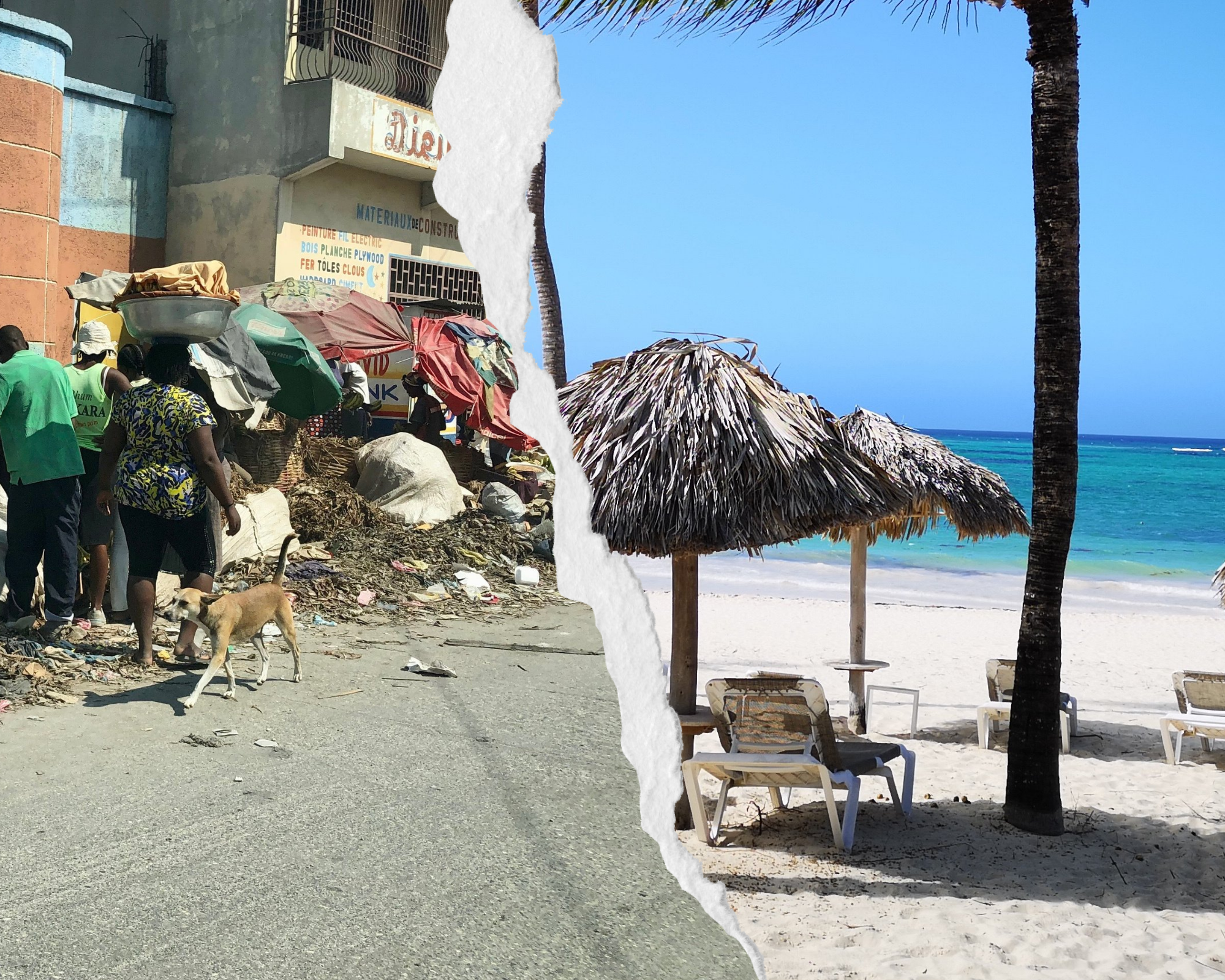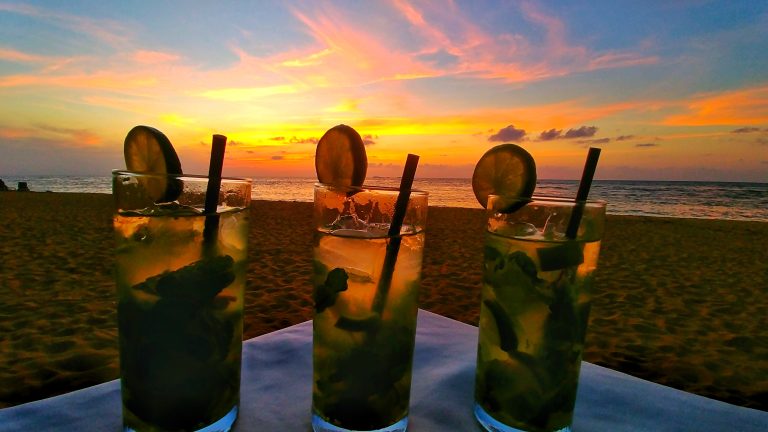Haiti And Dominican Republic – Why Are They So Different? One Island, Two Worlds
Haiti and the Dominican Republic are two separate countries located in the Caribbean. They share the island of Hispaniola which is divided into two parts with Haiti occupying the smaller western area while the Dominican Republic lies in the east. Both countries are home to stunning white-sand beaches, crystal clear waters and beautiful scenery. But one is the poorest country in the western hemisphere while the other is a hotspot for international tourism.
Haiti and the Dominican Republic couldn’t be more different even though they are located so close together. These significant differences can be traced back to a number of reasons.
Historical Differences between Haiti and the Dominican Republic
Most of the differences between Haiti and the Dominican Republic come from the colonial past that both these countries had to endure. Christopher Columbus arrived in the area in 1492 and named the island that Haiti and the Dominican Republic share Hispaniola.
For two hundred years, it became a Spanish colony, however, it was never the main point of focus for the Spanish, and in 1697 the western part of the island was given to the French, who were far more invested in this area of the world. They began bringing large numbers of slaves to their new colony, which caused extreme overpopulation.
However, Haiti became one of the most profitable French colonies in the world as slaves accelerated the production of sugar, coffee, and cotton. By 1791 there had been a rebellion on Hispaniola, and slavery was abolished after a terrible war that lasted until 1804 when Haiti was formally given its independence from the French.
The Dominican Republic stayed under colonial rule for a while longer and wasn’t officially established until 1844. However, even back then, this part of the island had only about a tenth of the slaves that Haiti had, despite it being twice as large.
Over time, both the Dominican Republic and Haiti were occupied once again by the Spanish but also the United States, and both countries faced political problems with severe corruption, coups, and revolutions.
During all of this, Haiti and the Dominican Republic had a rough relationship full of animosity, racism as well as cultural and economic differences. Haiti was always the poorer of the two and never seemed to be able to catch up to its far wealthier neighbor. As time passed, the two economies grew further and further apart as the hundreds of years of exploitation of Haiti, and its land was nearly impossible to reverse.
Economic Differences between Haiti and the Dominican Republic
Haiti is much smaller than the Dominican Republic but their populations are nearly the same, both lying close to 10 million people. Over time, Haiti always struggled with overpopulation as colonial rulers brought too many slaves to the area that the land could not sustain. After it declared independence Haiti was forced to pay its former colonizers, the French, a large sum of money while simultaneously fighting a war with the comparably wealthy Dominican Republic. This debt drove the country into financial ruin and was one of the reasons why the country of Haiti didn’t stand a chance at becoming a prosperous nation.
Even today, Haiti is unable to produce enough food for its people and its GDP (gross domestic product) is only 18.8$. The Dominican Republic in comparison has a GDP of 142$ which truly puts this number into perspective.
The average life expectancy of someone born in the Dominican Republic is almost 15 years higher than for those born across the border. There are also more than twice as many people living with HIV/AIDS in Haiti than its neighbour.
While the Dominican Republic is by no means one of the world’s wealthiest places, it does well, which is primarily due to its lucrative tourism industry. Haiti, in comparison, cannot attract the millions of luxury tourists that visit its neighbour causing the country to slip further and further into poverty.
During colonial times a large part of Haiti’s forests were cut down which caused severe soil erosion, making it difficult to grow crops. Due to the overpopulation there isn’t much space for farming anyway and large parts of Haiti consist of slums with terrible living conditions.
In comparison, the Dominican Republic is home to luxury resorts and wealthy neighborhoods, and the large city of Santo Domingo, which boasts beautiful architecture has grown into a small metropolis over the years.
Tourism Differences between Haiti and the Dominican Republic
Despite the fact that Haiti is such a poor country it’s actually not very cheap to travel here. Unlike the Dominican Republic, Haiti is not set up for tourism and is far less accessible with very weak infrastructure and few tourist facilities.
The Dominican Republic is not really a budget-destination either but it has a wide selection of hotels, activities and tours which are still comparatively cheap when looking at other Caribbean islands. If you’re not after a luxury stay you’ll most likely be able to find a decent hotel for around 20$ per night while a similar place to stay in Haiti might cost as much as 50$.
However, Haiti was not always so inaccessible for tourism. About 50 years ago, it was actually one of the most popular destinations in the Caribbean and considered at the forefront of tourism in the area. But, political turmoil, natural catastrophes, and the extensive media coverage of the poverty in Haiti have deterred tourists from visiting the country in more recent years. These are just some reasons why many visitors tend to choose other Caribbean destinations such as the Dominican Republic because they are simply more peaceful and accessible.
That being said, even though Haiti has acquired a somewhat bad reputation in the mainstream media, it does not mean that this country shouldn’t be on your list of places to see. Luckily, it’s not too difficult to cross the border between the Dominican Republic and Haiti, so you can make up your own mind which you prefer.
Some of the best things to do and see in Haiti include the annual carnival celebrations, which are typically held in January or February, as well as the world-famous Voodoo festival of the dead in November. Port Salud and Labadee are only two examples of stunning beaches you absolutely need to see, and the Citadelle la Ferriere is an impressive old fortress that is considered the largest in the Americas.
The Dominican Republic has similar carnival celebrations, although they have become far more tourist-oriented compared to the more traditional celebrations in Haiti. The Dominican Republic has a large selection of all-inclusive resorts which attract luxury travelers. There is a considerable industry for water sports and scuba diving, and of course, beaches such as Playa Dorada and Playa Juanillo are the main focus. The Dominican Republic is home to little beach towns such as Punta Cana or Las Galeras, which are especially popular.
Environmental Differences between Haiti and the Dominican Republic
Both Haiti and the Dominican Republic lie in an area of the world that is prone to natural disasters like hurricanes, floods, and earthquakes. Their climate is hot and humid year-round except for the mountainous regions, which are slightly cooler. The Dominican Republic tends to get more rainfall which is favorable for agriculture and means the western areas of the island Hispaniola are far more green than the drier Haiti. The mountainous areas are mostly to blame for this, cutting Haiti off from the rain.
The hurricane season on Hispaniola approximately lasts from August to October, which is also the rainy season in the area. Northern Haiti tends to have a slightly different climate, and the rainy season takes place a bit later. However, despite this, the climate in both countries is nearly identical, and they both experience disasters like Hurricane Jeanne in 2004, Hurricane Matthew in 2016, or the devastating earthquake in 2010. In all of these cases, Haiti was hit much harder than the Dominican Republic, and its terrible infrastructure caused the aftermath to have devastating effects on the country.
Due to Hurricane Jeanne, more than 3000 people died in Haiti, while the Dominican Republic only reported 19 deaths. Similarly, more than 200,000 casualties occurred in connection to the 2010 earthquake in Haiti, and the Dominican Republic reported none since the epicenter was located across the border. Despite relief efforts, Haiti struggled to recover from this devastating crisis. The Dominican Republic has been somewhat lucky in the past and wasn’t hit as severely by environmental disasters. However, its solid infrastructure and comparably wealthy economy have also allowed the country to recover far more quickly.
Cultural Differences between Haiti and the Dominican Republic
If you travel to both Haiti and the Dominican Republic, you’ll immediately notice the cultural differences between the two. Of course, Spanish is the primary language in the Dominican Republic, and the country still has a considerable Spanish influence, including in its cuisine. You can find paella and other Spanish specialties, making the food in the Dominican Republic far less spicy than the rest of the Caribbean.
Haiti has a lot more African influences, and French, as well as Haitian Creole, are the official languages. The cuisine is spicy and bold and closer to other Caribbean countries.


A very well researched, written and informative article, thank you.
I have traveled to Haiti every year for more than 20 years. It does have some gems and special places like Abaka Bay on the island of Ile a Vache. I wish Haiti could get a real break. So much suffering. The people will always be in my heart.
Do your own research to see what they left out.
You failed to mention how Haiti Occupied the Dominican Republic for a good 20 years… that was not colonial rule…
Everyone should read this so there is a better understanding of the problem today.
Thank you Jose Soto for bringing this up. I noticed that too.